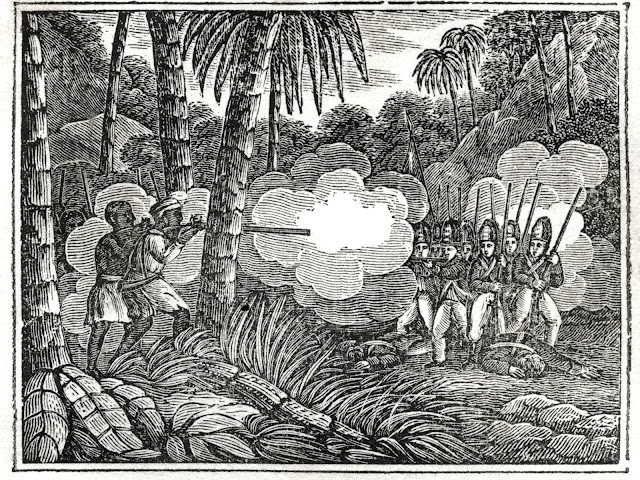The Maroons in Jamaica are descendants of enslaved Africans who escaped from plantations and formed their own communities in the rugged, mountainous regions of the island during the period of European colonization. Here's an overview of the Maroon community in Jamaica and how their homes evolved from hideouts to settlements:
Origins of Maroon Communities:
- The origins of the Maroon communities in Jamaica can be traced back to the arrival of enslaved Africans brought to the island by European colonizers to work on sugar plantations.
- Some enslaved Africans escaped from plantations and sought refuge in the dense forests and mountains of Jamaica's interior, where they formed communities to resist capture and enslavement.
- These communities, known as Maroon settlements, were established by enslaved Africans who often had knowledge of the terrain and survival skills necessary for evading capture.
First Homes: Hideouts and Palenques:
- Initially, Maroons constructed simple shelters and hideouts in remote areas, such as caves, thick forests, and inaccessible mountain regions, to evade capture by colonial authorities.
- These hideouts served as temporary refuges where Maroons could conceal themselves and organize resistance against plantation owners and British forces.
- As Maroon communities grew in size and strength, they began to establish more permanent settlements known as palenques, which were fortified villages protected by natural barriers and defensive structures.
Development of Maroon Settlements:
- Over time, Maroon settlements evolved from makeshift hideouts to more structured communities with established social hierarchies, governance systems, and cultural practices.
- Maroons constructed homes using local materials such as wood, thatch, and bamboo, incorporating traditional building techniques passed down through generations.
- The layout of Maroon settlements was often strategic, with homes arranged to maximize defense and security against potential attacks from colonial forces.
- Agriculture played a crucial role in the sustainability of Maroon communities, with residents cultivating crops such as yams, cassava, and plantains to supplement their diet and maintain self-sufficiency.
Transition to Modern Communities:
- As Jamaica transitioned from colonial rule to independence, Maroon communities continued to assert their autonomy and cultural identity.
- Today, Maroon settlements in Jamaica, such as Accompong and Moore Town, have evolved into modern communities while preserving their unique heritage and traditions.
- The architecture of Maroon homes reflects a blend of traditional and contemporary styles, with many residents living in sturdy, well-built houses equipped with modern amenities.
- Maroon communities maintain strong cultural ties through music, dance, storytelling, and spiritual practices, which serve as expressions of resilience, resistance, and cultural pride.
In summary, the Maroon community in Jamaica has a rich history rooted in resistance, survival, and cultural preservation. From their humble beginnings as fugitive slaves seeking refuge in the island's interior, Maroons have developed thriving settlements that embody their enduring spirit of independence and self-determination.
